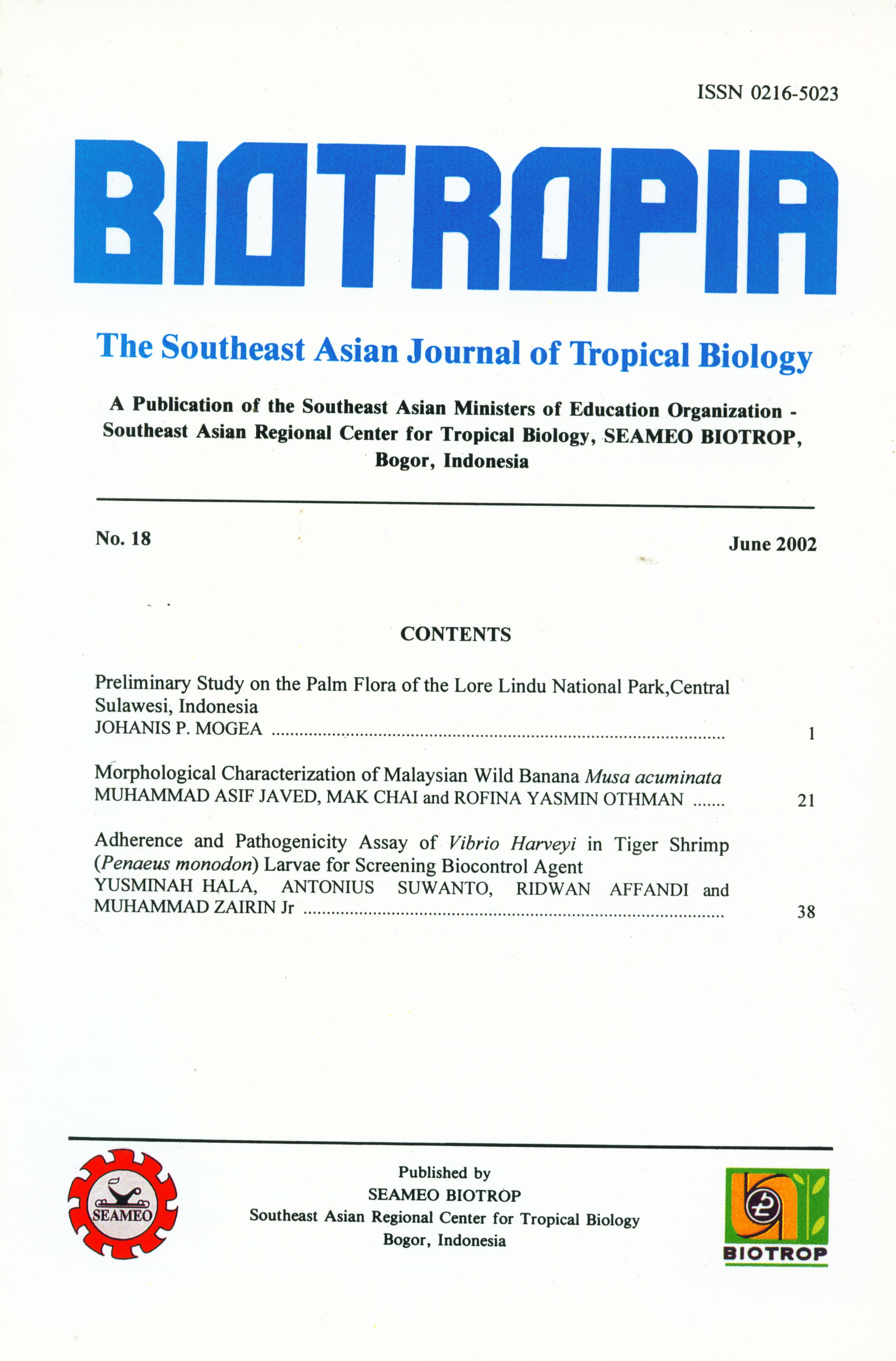
Tags
ADHERENCE AND PATHOGENICITY ASSAY OF VIBRIO HARVEYI IN TIGER SHRIMP (PENAEUS MONODON) LARVAE FOR SCREENING BIOCONTROL AGENT
Content Language : English

Rifampicin-resistant marker was employed as a reporter to detect the adherence and colonization of V.
harveyi in shrimp larvae. Vibrio harveyi P1B and YA32.2 were isolated from dead shrimp larvae in
Besuki, Northern Coast of East Java, while V. harveyi HB3, was isolated from pristine sea water in
Pacitan, Southern Coast of East Java. Vibrio metschnikovii used as biocontrol agent was isolated from
healthy shrimp larvae in Serang, West Java. Spontaneous mutation was conducted to generate V. harveyi
P1B, YA32.2 and HB3 resistant to rifampicin. These mutants exhibited similar survival ability to their
parental (wild type) strains. Significant larval mortality was observed in shrimp larvae inoculated with
YA32.2 than that of larvae inoculated with P1B. Larvae inoculated with HB3 showed the lowest
mortality. Bacterial cell count of Vibrio Rf* in dead larvae were 103
-104
cells/larvae. Isolates of Vibrio
metschnikovii Z and M as biocontrol candidates effectively reduced the growth and adherence ability of
YA32.2 to shrimp larvae. Larval mortality in rearing water inoculated simultaneously with YA32.2 and V.
metschnikovii was lower than the one inoculated with YA32.2 alone. Therefore, Vibrio metschnikovii Z or M
could be developed as an effective probiotic or biocontrol agent for V. harveyi in shrimp hatcheries.
Link

This work is licensed under a Creative Commons Attribution-NonCommercial-NoDerivatives 4.0 International License.
